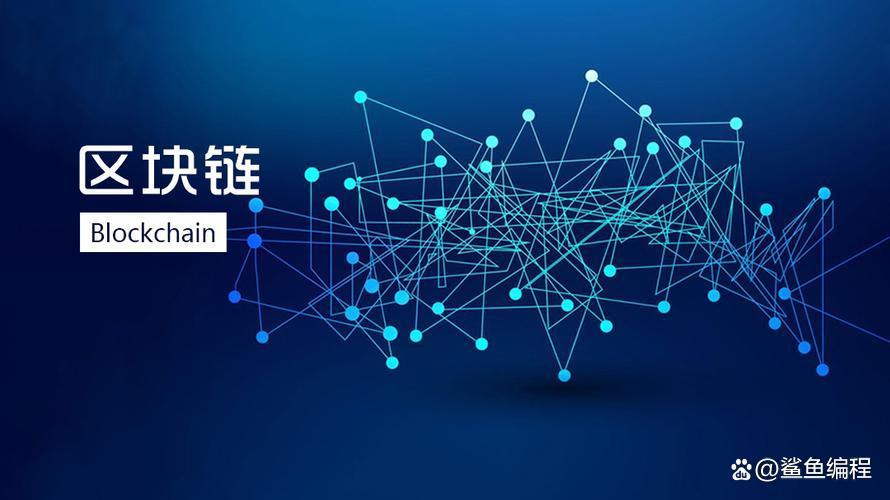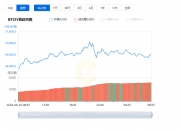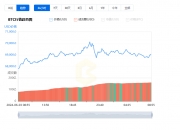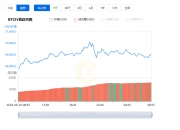随着互联网和数字技术的发展,区块链成为了一个备受关注和研究的领域。它被认为是一种革命性的技术,能够带来去中心化、安全、透明和可信的数据交换和记录方式,不仅可以用于数字货币和金融领域,还可以应用于供应链管理、物联网、政府服务、医疗保健等实际领域。本文将介绍区块链的基本概念和原理。
With the development of the Internet and digital technology, block chains have become an area of attention and research. They are seen as a revolutionary technology that can lead to decentralized, secure, transparent and credible data exchange and recording methods that can be applied not only in the areas of digital money and finance, but also in practical areas such as supply chain management, physical networking, government services, and health care. The basic concepts and rationale of block chains are described in this paper.

1.区块链定义
区块链是一种去中心化的分布式账本技术,它使用密码学方法保证了数据交换和记录的安全性和可信度。区块链通过连接多个区块来组成一个链式结构,并利用共识算法来确保每个节点都有相同的记录和更新。这样就可以避免中心化机构的单点故障和审查,同时保证了数据的不可篡改性和可追溯性。
Block chains are a decentralised distributed book technology that uses cryptography to ensure the security and credibility of data exchange and records. Block chains form a chain structure by connecting multiple blocks and using consensus algorithms to ensure that each node has the same records and updates. This avoids a single point failure and review by a centralized agency, while ensuring the integrability and traceability of data.
2.区块链的历史
区块链的历史可以追溯到2008年,当时一位自称中本聪的人发布了一篇题为《比特币:一种点对点电子现金系统》的论文,提出了一种去中心化、匿名、可追溯的数字货币系统。这个系统使用区块链技术来记录交易和验证账户余额,成为了第一个成功应用区块链技术的案例。随后,越来越多的人开始研究和探索区块链技术的潜力和应用场景。
The history of the block chain dates back to 2008, when a paper entitled Bitcoin: a point-to-point electronic cash system was published by a self-proclaimed medium-brainer, proposing a decentralized, anonymous and retrospective digital monetary system that uses block chain technology to record transactions and verify account balances as the first case of successful application of block chain technology. Subsequently, an increasing number of people began to study and explore the potential and application of block chain technology.

3.区块链主要由以下几个部分组成:
The block chain consists mainly of the following components: .
(1)区块:每个区块包含了一定数量的交易记录和一个哈希值,它们按顺序连接成区块链。
(1) Blocks: Each block contains a certain number of transaction records and a Hashi value, which are sequentially linked into a block chain.
(2)节点:每个节点都是网络上的一个计算机,它们通过互联网连接起来并共同维护整个区块链。
(2) Nodes: Each node is a computer on the network that connects through the Internet and maintains the entire block chain together.
(3)共识算法:共识算法是一种用于决定哪个节点可以添加新块到区块链中的规则。比特币使用的共识算法是工作量证明(PoW),以太坊等其他区块链则采用了不同的共识算法。
(3) Consensus algorithm: Consensus algorithm is a rule used to determine which node can add new blocks to the block chain. Bitcoin uses consensus algorithms such as workload proof (PoW), while other block chains such as Taiwan use different consensus algorithms.
(4)加密技术:加密技术是区块链安全性的基础,包括公钥密码学、哈希函数、数字签名等。
(4) Encryption technology: Encryption technology is the basis for block chain security, including public key cryptography, Hashi function, digital signature, etc.

1. 区块链的去中心化特性
区块链的最重要特性是去中心化,它不依赖于任何中心机构或第三方信任。每个节点都有完整的账本副本,并且在网络上相互通信和协作,任何交易和记录只有得到其他节点的验证才会被添加到区块链之中。这种去中心化的结构保证了数据的安全性和可信度,同时也避免了中心化机构的单点故障和审查。
The most important feature of the block chain is decentralization, which does not depend on any central institution or third-party trust. Each node has a complete copy of the account book and communicates and collaborates with each other on the network, and any transaction and record can be added to the block chain only if validated by another node. This decentralized structure guarantees the security and credibility of the data, while also avoiding a single failure or review of the centralized institution.
2. 区块链的数据结构和加密技术
区块链使用一种称为Merkle树的数据结构来存储交易记录和哈希值。每个块包含了一定数量的交易记录和一个上一个块的哈希值,这个哈希值连接了所有之前的块,形成了区块链。Merkle树是一种二叉树结构,它将所有交易记录分成两组,并为每组计算出一个哈希值。这些哈希值再被合并成一个新的哈希值,并递归地重复这个过程,直到最终只剩下一个根哈希值。这个根哈希值包含了所有交易记录的摘要,保证了数据的完整性和可验证性。
Block chains use a data structure called Merkle trees to store transaction records and Hashi values. Each block contains a certain number of transaction records and a previous Hashi value, which connects all previous blocks, forming a chain of blocks. Merkle trees are a two-fork tree structure, which divides all transaction records into two groups and calculates a Hashi value for each group. These Hashi values are then merged into a new Hashi value and repeat the process backwards until there is only one root Hashi value. This root Hashi value contains a summary of all transaction records, which guarantees the integrity and authentication of the data.

加密技术是区块链安全性的基础,包括公钥密码学、哈希函数、数字签名等。公钥密码学使用了两个密钥(公钥和私钥)来加密和解密数据,保证了信息的机密性和认证性。哈希函数则将任意长度的数据映射为固定长度的哈希值,保证了数据的不可篡改性和唯一性。数字签名利用公钥密码学来确保数字文件的真实性和不可否认性,防止数据被篡改或伪造。
Encryption technology is the basis for block chain security, including public key cryptography, Hashi functions, digital signatures, etc. Public key cryptography uses two keys (public and private) to encrypt and declassify data, guaranteeing the confidentiality and authentication of information. The Hashi function uses data mapping at any length to a fixed length, guaranteeing the immutable and uniqueness of data. Digital signatures use public key cryptography to ensure the authenticity and undeniable character of digital files and to prevent data from being tampered with or falsified.
3. 区块链的交易验证和记录
区块链上的每个交易都需要经过多个节点的验证才能被添加到区块链中。具体来说,交易会被广播到网络中的所有节点,在经过一定的验证和筛选之后,会被打包成块并添加到区块链中。在比特币中,交易需要通过PoW共识算法来获得验证,节点需要使用计算力来解决一个数学难题,从而获得添加新块的权利。而在以太坊中,则采用了基于权益证明(PoS)的共识算法,节点需要拥有一定数量的ETH作为权益来获得添加新块的权利。
Each transaction on the block chain needs to be validated by multiple nodes in order to be added to the block chain. Specifically, the transaction will be broadcast to all nodes in the network and, after some validation and screening, will be packed into blocks and added to the block chain. In Bitcoin, the transaction will need to be validated through the PoW consensus algorithm, and node will need to solve a mathematical problem, thereby obtaining the right to add new blocks. In Ether, the consensus algorithm based on proof of interests (PoS) is used, and the node will need to have a certain amount of ETH as an interest to acquire the right to add new blocks.

1. 数字货币和加密资产
1. Digital currency and encrypted assets
区块链最初被应用于比特币等数字货币的创造和交易。随着越来越多的人开始关注区块链技术的潜力,越来越多的加密资产和数字货币被创造出来。这些数字资产可以被用来进行投资、交易、支付、存储价值等操作,并且不受国家、银行或金融机构的监管和审查。
As more and more people begin to focus on the potential of block chain technology, more and more encrypted assets and digital money are created. These assets can be used for investments, transactions, payments, storage values, etc., and are not subject to regulation and scrutiny by states, banks, or financial institutions.
2. 去中心化应用程序
2. Go centralize application
区块链还可以用于创建去中心化的应用程序(DApps),这些应用程序没有单个中心化的服务器或数据库,而是由分布在网络上的节点共同维护和运行。这些应用程序可以应用于供应链管理、医疗保健、政府服务等领域,并且可以实现更高效、透明和可信的交易和记录方式。
Block chains can also be used to create decentralised applications (DApps), which do not have a single centralized server or database, but are jointly maintained and operated by nodes distributed over the network. These applications can be applied in areas such as supply chain management, health care, government services, and more efficient, transparent and credible modes of transactions and records.

3. 其他实际应用领域
3. Other practical applications
除了数字货币和DApps,区块链还可以应用于物联网、电子投票、知识产权、能源管理等实际应用领域。例如,区块链可以用于记录物联网设备之间的交互和数据传输,避免了中心化服务器的单点故障和安全隐患;区块链也可以用于记录选民的投票和身份认证信息,从而实现更安全和高效的选举过程。
In addition to digital money and DApps, block chains can also be used in practical applications such as physical networking, electronic voting, intellectual property rights, and energy management. For example, block chains can be used to record interactivity and data transmission between object networking devices, avoiding single point failures and security concerns on centralised servers; block chains can also be used to record voter voting and identification information, thus achieving a safer and efficient electoral process.

1. 区块链的安全性问题
The security of the block chain
尽管区块链使用了多种加密技术来保护数据的安全性,但仍然存在一些安全隐患和攻击风险。例如,51%攻击可以利用大量的计算力来控制网络上的大部分节点,从而篡改交易记录或进行双重花费。此外,智能合约也可能存在漏洞或脆弱性,导致合约的执行结果不符合预期。
While block chains use a variety of encryption techniques to protect data security, there are still some security risks and risk of attack. For example, 51% of attacks can control most of the nodes on the network with significant computing power, thus tampering with transaction records or double costs.
2.区块链的可扩展性问题
区块链目前面临的另一个挑战是可扩展性问题。随着交易数量的增加,区块链需要处理更多的交易记录和数据存储,这导致了计算资源和存储空间的压力。解决这个问题的方法包括分片、侧链和闪电网络等技术,它们可以将交易记录分散到多个区块链中,缓解了单一区块链的负荷。
As the number of transactions increases, blocks chains need to deal with more transaction records and data storage, leading to pressure on computing resources and storage space. The solution to this problem includes technologies such as fragments, side chains, and lightning networks that can spread transaction records across multiple block chains and ease the load of a single block chain.

3. 区块链的政策和监管环境
由于区块链的去中心化特性,它与传统金融和政府机构存在冲突。目前,许多国家对区块链的政策和法规尚未完善,这给企业和用户带来了不确定性和风险。一些国家采取了禁止或限制数字货币交易、ICO等措施,而另一些国家则鼓励和支持区块链技术的发展。
The decentralized nature of the block chain is in conflict with traditional financial and governmental institutions. At present, many countries have not yet developed policies and regulations on the block chain, which create uncertainty and risk for businesses and users. Some countries have adopted measures to prohibit or restrict digital currency transactions, ICO, etc., while others have encouraged and supported the development of block chain technology.
4. 区块链的未来发展趋势
4. Future trends in the block chain
虽然区块链技术目前仍处于早期阶段,但它已经在金融、物流、能源、医疗、政府服务等领域取得了初步的应用。随着技术的不断发展和完善,区块链将逐渐成为更加广泛的领域的核心技术。未来,区块链可能会与人工智能、大数据、物联网等技术结合,创造出更多新型应用场景和商业模式。
While the block chain technology is still in its early stages, it has already achieved initial applications in the areas of finance, logistics, energy, health, and government services. As the technology continues to evolve and improve, the block chain will gradually become the core technology in a broader field. In the future, the block chain may be combined with technologies such as artificial intelligence, big data, and physical networking to create new applications and business models.

本文对区块链的基本概念和原理进行了介绍,并探讨了其应用场景、挑战和未来发展趋势。尽管区块链技术还存在一些问题和挑战,但它已经展现出了巨大的潜力和价值。未来,随着技术的不断发展和应用场景的不断扩展,区块链有望成为一个更加广泛和重要的领域的核心技术。
This paper presents the basic concepts and rationale of the block chain and explores its application landscape, challenges, and future trends. Although there are some problems and challenges with block chain technology, it has shown great potential and value. In the future, as technology continues to grow and the application landscape expands, the block chain is expected to become a core technology in a broader and more important field.
注册有任何问题请添加 微信:MVIP619 拉你进入群

打开微信扫一扫
添加客服
进入交流群



















发表评论